What is Spinal Shock Syndrome?
Any injury to the spinal cord can have devastating consequences on the body's functionality, leading to a range of conditions, including spinal shock syndrome. This rare but serious condition can occur after a spinal cord injury or accident, causing temporary loss of motor and sensory functions below the injury site.
In this article, we will discuss what spinal shock is, its causes, symptoms, duration and legal options for victims of spinal shock syndrome.
What Causes Spinal Shock Syndrome?
Spinal Shock can occur immediately after a spinal cord injury and can last for weeks or even months.
The most common injuries causing Spinal Shock Syndrome, include:
- Traumatic spinal cord injuries, such as from car accidents, falls, acts of violence or sports injuries
- Non-traumatic spinal cord injuries, such as from infections, tumors, or vascular disorders
- Surgical interventions on the spine, such as spinal anesthesia, discectomy, or spinal fusion.
What are the Symptoms of Spinal Shock?
The symptoms of spinal shock syndrome vary depending on the severity and location of the spinal cord injury (SCI).
The most common symptoms include:
- Loss of reflexes
- Flaccid paralysis or muscle weakness
- Loss of sensation
- Difficulty breathing or swallowing
- Increased blood pressure
- Bradycardia or slow heart rate.
- Skin color discoloration (pale and dry skin)
- Bladder and GI tract issues
Every individual with a spinal cord injury or spinal shock will have a unique experience, despite the presence of general symptoms like those listed above.
Spinal Shock vs Neurogenic Shock
Spinal shock and neurogenic shock are linked to each other and share similar causes, but differ in their effects.
Neurogenic shock is a condition where the body's blood vessels fail to function properly, resulting in inadequate blood flow throughout the body. Unlike other types of shock caused by blood loss, neurogenic shock occurs without significant blood loss. Instead, the issue lies with the body's ability to properly circulate blood.
On the other hand, spinal shock is characterized by a loss of all sensation below or around the injury level and does not have a circulatory origin.
The Stages of Spinal Shock After Injury
While there has been a lot of interest in Spinal Shock Syndrome, its causes and importance have been debated until recently. However, recent advances in our understanding of the physiology of the injured spinal cord are shedding new light on this process. According to a clinical in depth analysis by Nature.com. Spinal Shock can be broken down into 4 stages.
- Areflexia/Hyporeflexia (0 - 1 days after the injury)
During this time, the AJ (ankle jerk) and other deep tendon reflexes are absent making muscles flaccid and paralyzed. However, some cutaneous reflexes like the BC, AW, and CM begin to recover. The first reflex to return is usually the DPR, which requires a strong stimulus and causes delayed toe flexing. This reflex may be present in about two-thirds of cases during this phase, while the BC is present in about half. The cremasteric reflex is seen in about a third of cases.
- Initial Reflex Return (1 - 3 days after injury)
During this phase, certain cutaneous reflexes become stronger, but deep tendon reflexes are usually still absent, except for the tibial H-reflex, which may return after about 24 hours. In some cases, elderly individuals or children may show early reflex recovery during this phase due to differences in their nervous system development or pre-existing conditions.
- Early Hyper-Reflexia (4 days - 1 month)
During this phase, most deep tendon reflexes start to return, and certain reflexes tend to recover in a specific order. Cutaneous reflexes also begin to appear, and most people regain these reflexes by the end of this period. However, there is variability in the timing of reflex recovery, even among people with complete spinal cord injuries. This variability may be due in part to differences in reflex excitability based on a person's previous experiences and training. For example, ballet dancers and other athletes may have different reflex excitability compared to untrained individuals.
- Spasticity Hyper-Reflexia (1 month - 12 months)
During this phase, some reflexes in the body become hyperactive and respond to even small things. There isn't much information about how long it takes for the bladder to start working normally again, but doctors think it usually takes 4 to 6 weeks. Some problems with blood pressure can go away within a few weeks, but other problems, like feeling dizzy when standing up, may last for several months. Autonomic dysreflexia, a serious condition that affects blood pressure, can develop over several weeks to months and last a long time.
How Long Does Spinal Shock Last?
Typically, the average duration of spinal shock ranges from 4 to 12 weeks. Spinal shock's duration can vary based on the seriousness of the injury. For example a cervical spine injury, which affects the head and neck region, will have lengthier health implications than a sacral spinal cord injury.
Suing For Damages After a Spinal Cord Injury
When considering a spinal cord injury (SCI) lawsuit, there are numerous factors to consider, including the nature of your injury, the circumstances in which it occurred, the extent of your recovery, the legal framework in your state, and the availability of evidence to support your case.
West Coast Trial Lawyers Will Fight To Maximize Your SCI Settlements
If you have sustained a spinal cord injury due to someone else's intentional or negligent actions, you may be able to pursue legal action.
Call on West Coast Trial Lawyers, Los Angeles’s top rated personal injury firm, where we’ve recovered over 1.5 billion dollars in damages for our clients.
It's important to find a lawyer with the right background and experience to represent you in the complex legal issues that may arise following a spinal cord injury.
While a family member or friend may offer to assist you, it's crucial to make sure that they have extensive experience in lawsuits specifically related to spinal cord injuries. Otherwise, they could potentially harm your chances of receiving proper compensation.
Call us now at 213-996-0790 for a free consultation. Our mission at WCTL is to fight on your behalf and maximize your SCI settlement.




